A Rustic Farm-Style Fountain:





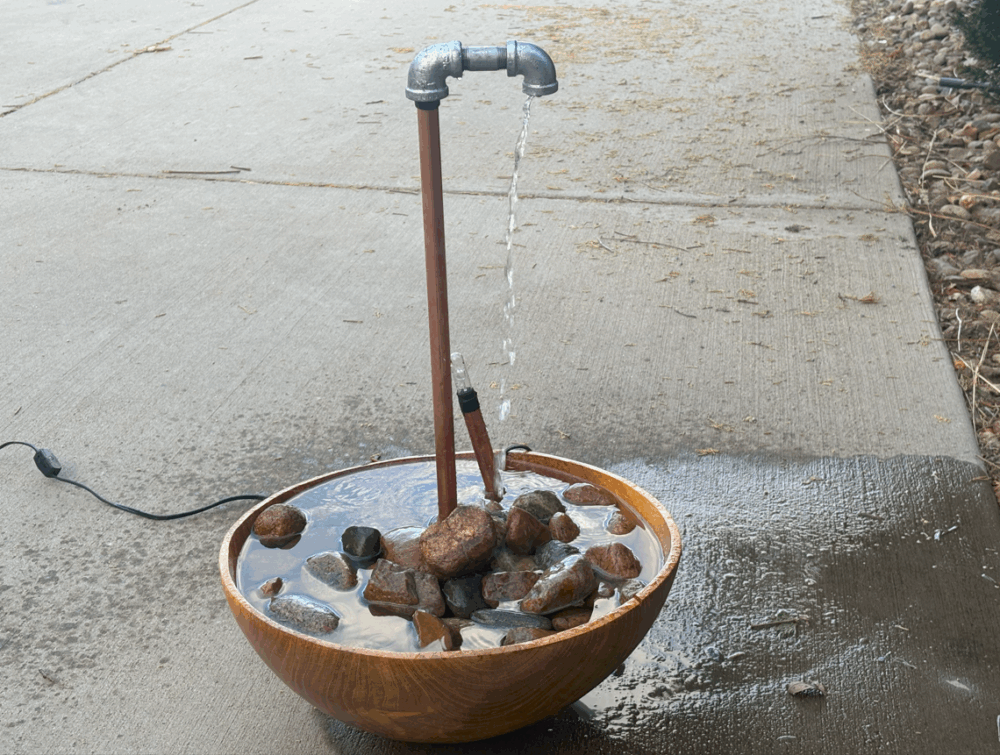
Fountains have long been symbols of tranquility and beauty, enhancing gardens, courtyards, and outdoor spaces. Rustic farm-style fountains, in particular, embrace simplicity and charm, reflecting a connection to rural life and natural elements. This report explores the design, construction, and functionality of a rustic fountain made of simple copper pipes set on a bed of rocks, delving into its aesthetic appeal, practical considerations, and the harmonious integration of materials.
Design Inspiration
The rustic farm-style fountain draws inspiration from the idyllic simplicity of rural living. Its design evokes imagery of old wells, agricultural tools, and natural streams, seamlessly blending into any garden or outdoor space. The use of copper pipes as the main structural element not only provides durability but also lends a sense of timelessness, as copper ages gracefully, developing a unique green patina over time. The fountain’s rock bed serves as a naturalistic foundation, imitating a stream’s rocky floor and anchoring the piece in the earth.
This combination of materials emphasizes a “hand-crafted” aesthetic that feels intentional and humble. The design philosophy revolves around sustainability, cost-effectiveness, and an appreciation for natural elements.
Construction
The fountain is constructed using basic, easily accessible materials, making it a practical and DIY-friendly project. Here’s an overview of the primary components:
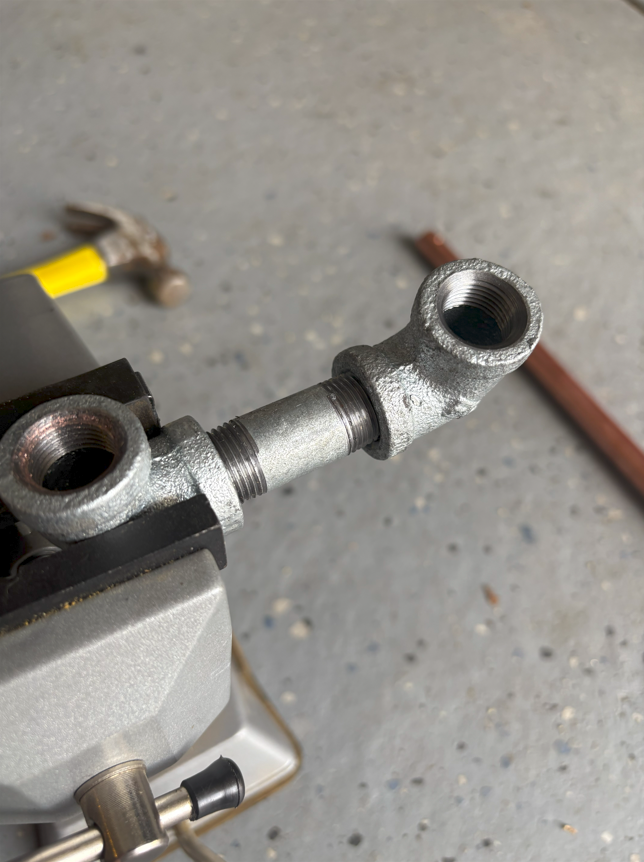
- Copper Pipes:
Copper pipes form the core structure of the fountain, guiding water flow and adding a metallic sheen. These pipes are chosen not only for their malleability and ease of assembly but also for their visual appeal and corrosion resistance. Over time, as the copper oxidizes, it develops a weathered patina, enhancing the rustic charm. - Bed of Rocks:
The fountain sits atop a carefully arranged bed of rocks of varying sizes and textures. These rocks serve multiple purposes: they provide stability, camouflage the water pump, and create an organic appearance. The natural shapes and earthy tones of the rocks complement the copper pipes beautifully. - Water Pump and Tubing:
A small, submersible water pump powers the fountain, circulating water from a hidden reservoir beneath the rocks. Flexible tubing connects the pump to the copper pipes, ensuring a continuous flow of water. The pump is chosen for its quiet operation and energy efficiency. - Small lighting assembly:
Redirecting some of the power for the pump into a small LED light that rests near the fountain also utilizing remaining copper piping. Unfortunately I broke the bulb during assembly and had to settle for using the fountain without the light installed.
Aesthetic and Functional Benefits
The rustic farm-style fountain offers a unique combination of aesthetic and practical advantages:
Aesthetic Appeal:
- The copper pipes and rock bed create a striking visual contrast between industrial and natural materials.
- Over time, the patina on the copper adds a sense of history and character.
- The soothing sound of flowing water enhances the ambiance of the outdoor space.
Environmental Integration:
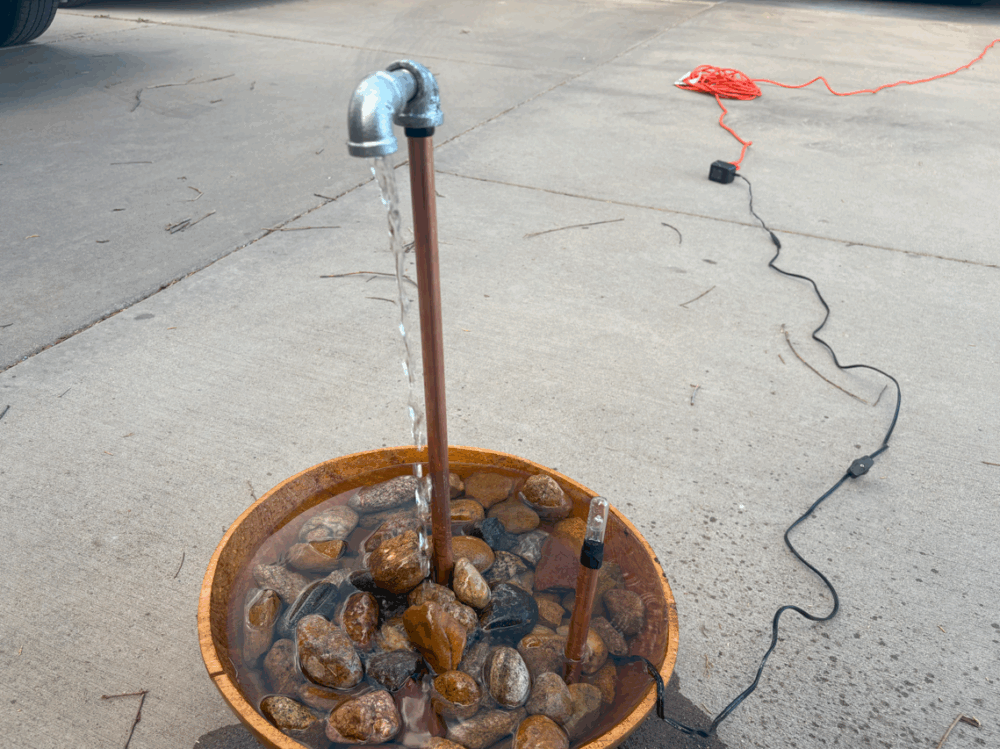
- The fountain blends seamlessly into gardens and outdoor landscapes, complementing both modern and traditional settings. I unfortunately did not have time to integrate my fountain fully into a landscape, but did my best to make the base match the aesthetic.
- The use of natural materials promotes sustainability and harmony with the environment.
Functional Benefits:
- The fountain provides a habitat for birds and other wildlife, enriching biodiversity in the garden.
- It requires minimal maintenance, thanks to the durability of copper and the simplicity of its design.
Placement and Landscape Integration
The beauty of a rustic farm-style fountain lies not only in its construction but also in how it harmonizes with its surroundings. Thoughtful placement and integration into the landscape can elevate the fountain’s aesthetic and functional impact. Here are some tips and considerations for optimizing its placement:
- Focal Point in the Garden:
- Position the fountain as the centerpiece of a garden or courtyard. Surround it with perennial plants, shrubs, or flowers that complement its earthy tones.
- Consider framing the fountain with weathered wooden beams or repurposed farm equipment for an added rustic touch.
- Water Feature in a Natural Setting:
- Integrate the fountain into a rock garden, creating a seamless transition between the bed of rocks and its surroundings.
- Pair it with a small stream or pond to mimic natural water flows, enhancing its tranquil appeal.
- Functional Placement for Wildlife:
- Place the fountain in an area accessible to birds and pollinators, offering them a source of fresh water.
- Add bird-friendly features such as shallow basins or perches to encourage wildlife interaction.
- Aesthetic Alignment with Architecture:
- Align the fountain with the architectural style of nearby structures, such as rustic barns, cottages, or modern garden sheds.
- Complement the copper and rock elements with matching materials in the surrounding decor, like wrought iron or stone pathways.
- Creative Lighting:
- Enhance the fountain’s charm by installing low-voltage LED lights around its base or within the rock bed. Warm-toned lighting emphasizes the natural hues of the materials, while cooler tones create a modern ambiance.
- Accessibility and Maintenance:
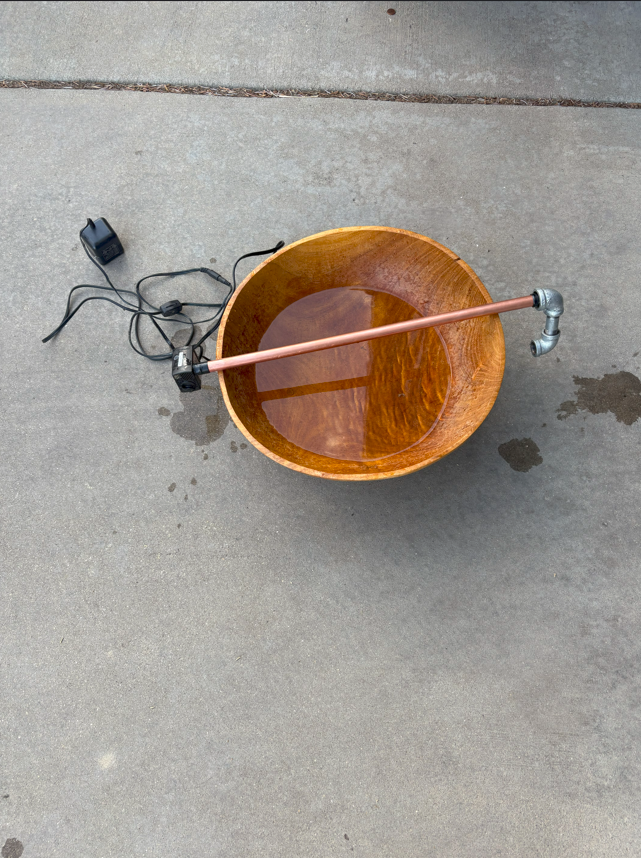
- Position the fountain in an area that allows for easy access during routine cleaning or repairs. Avoid placing it in regions prone to heavy debris or falling leaves.
- Seasonal Adaptability:
- Ensure the fountain is easily winterized to protect it from freezing temperatures. Consider placing it in a sheltered location or covering it with insulation during colder months.
By carefully selecting the location and surrounding elements, this rustic farm-style fountain can become a cherished feature of any outdoor space, captivating guests and providing a serene retreat.
Maintenance and Longevity
To ensure the fountain remains functional and visually appealing, regular maintenance is recommended. Key tasks include:
- Cleaning:
Periodically remove debris from the rock bed and reservoir to prevent clogging. Clean the water pump as needed to maintain efficient operation. - Refilling:
Monitor the water level in the reservoir and refill it as necessary to compensate for evaporation. - Monitoring Copper Aging:
While the patina on copper adds charm, it is important to ensure the pipes remain structurally sound. Polishing the copper occasionally can restore its original shine if desired.
The rustic farm-style fountain, crafted from simple copper pipes and set on a bed of rocks, epitomizes elegance in simplicity. Its thoughtful design, rooted in natural materials and timeless aesthetics, creates a serene focal point for any outdoor space. Combining sustainability, charm, and functionality, this fountain is a testament to the enduring appeal of handcrafted beauty.
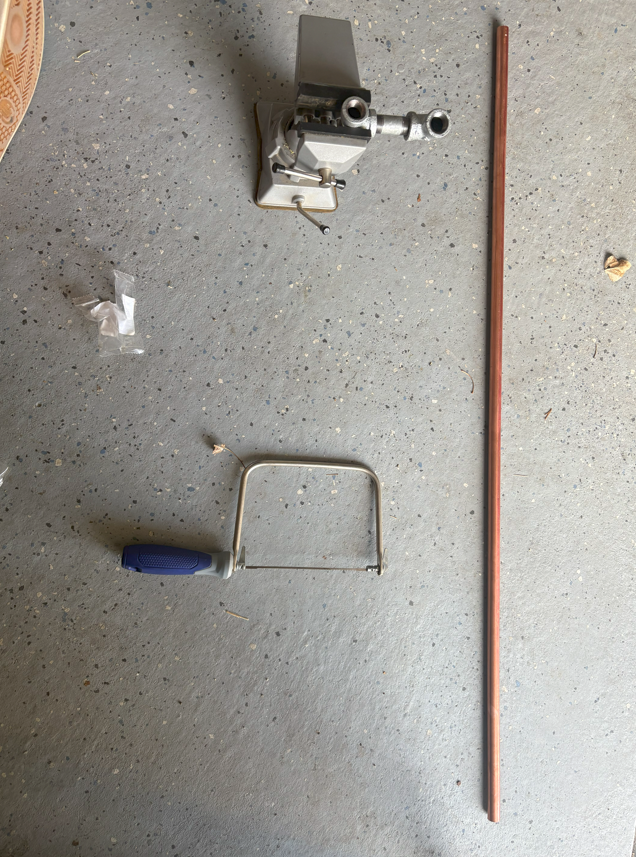
Whether as a DIY project or a professionally built feature, this fountain invites its viewers to pause, reflect, and appreciate the soothing presence of water in motion. A piece like this not only enhances the visual allure of a garden but also fosters a deeper connection to nature—truly embodying the spirit of rustic living.
All images: Benjamin Haley

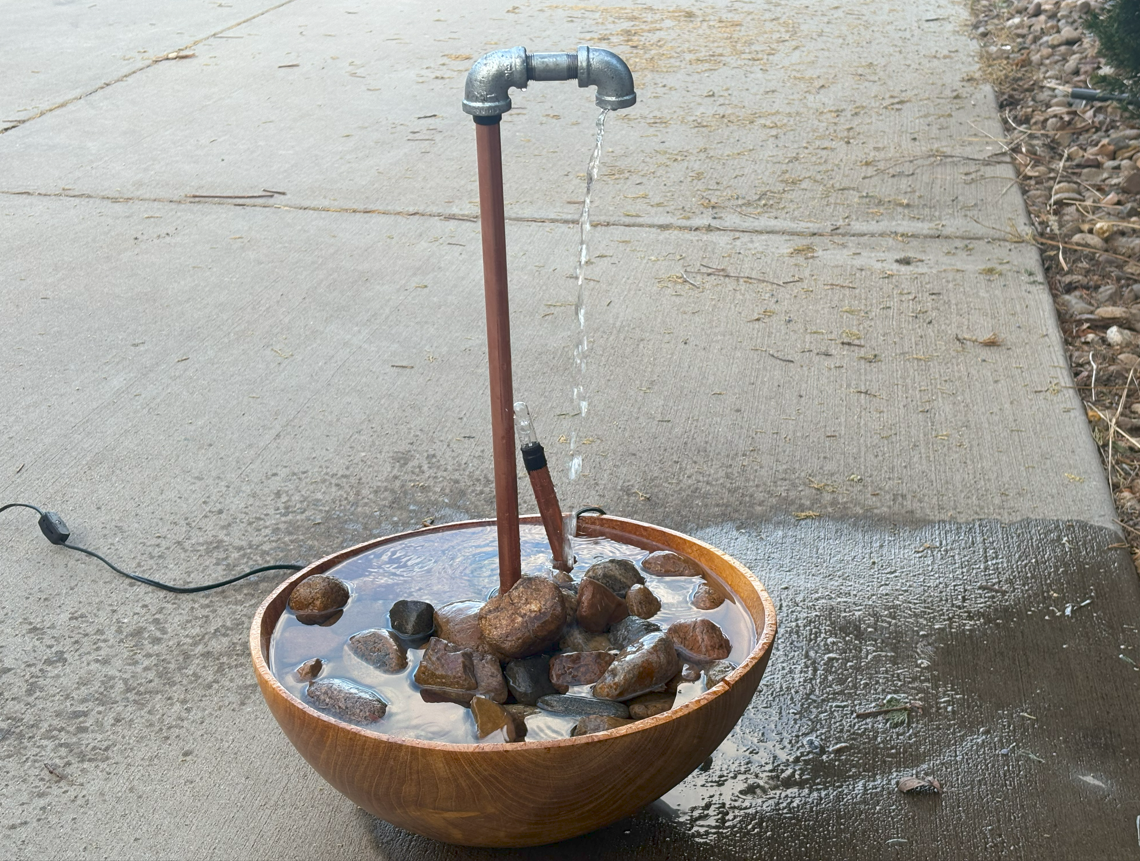
1 Comment. Leave new
I think this project turned out really well! It looks better than what I could have imagined. It was cool to see the step-by-step, as well as when you used what materials. What was the hardest part?